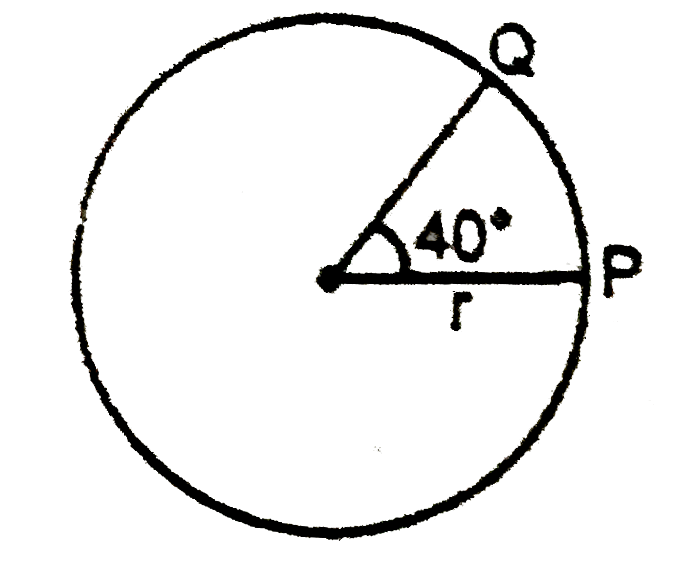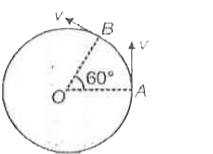A charged particle (charge q) is moving in a circle of radius R with unifrom speed v. The associated magnetic moment μ is given by
qvR2
qvR2
qvR22
qvR
The correct Answer is:a
To find the magnetic moment (μ) associated with a charged particle moving in a circle, we can follow these steps:
Step 1: Understand the definition of magnetic moment
The magnetic moment (μ) for a current loop is defined as:
μ=I⋅A
where I is the current and A is the area of the loop.
Step 2: Calculate the area of the circular path
The area A of a circle with radius R is given by:
A=πR2
Step 3: Determine the current I
Current I can be defined as the charge q passing through a point in the circuit per unit time. For a particle moving in a circle, the time T taken for one complete revolution is:
T=CircumferenceSpeed=2πRv
Thus, the current I can be expressed as:
I=qT=q2πRv=qv2πR
Step 4: Substitute I and A into the magnetic moment formula
Now, substituting the values of I and A into the magnetic moment formula:
μ=I⋅A=(qv2πR)⋅(πR2)
Step 5: Simplify the expression
Now simplifying the expression:
μ=qv2πR⋅πR2=qvR2
Final Result
Thus, the magnetic moment μ associated with the charged particle moving in a circle is:
μ=qvR2
The magnetic moment (μ) for a current loop is defined as:
μ=I⋅A
where I is the current and A is the area of the loop.
The area A of a circle with radius R is given by:
A=πR2
Current I can be defined as the charge q passing through a point in the circuit per unit time. For a particle moving in a circle, the time T taken for one complete revolution is:
T=CircumferenceSpeed=2πRv
Thus, the current I can be expressed as:
I=qT=q2πRv=qv2πR
Now, substituting the values of I and A into the magnetic moment formula:
μ=I⋅A=(qv2πR)⋅(πR2)
Now simplifying the expression:
μ=qv2πR⋅πR2=qvR2
Thus, the magnetic moment μ associated with the charged particle moving in a circle is:
μ=qvR2
Similar Questions
Knowledge Check
A particle of charge q and mass m moves in a circular orbit of radius r with angular speed w the ratio of the magnitude of its magnetic moment to that of its angular momentum depends on
Aw and qBw, q and mCq and mDw and m
A particle of charge 'q' and mass 'm' move in a circular orbit of radius 'r' with frequency 'v' the ratio of the magnetic moment to angular momentum is:
View SolutionA particle of charge q and mass m moves in a circular orbit of radius r with angular speed ω. The ratio of the magnitude of its magnetic moment to that of its angular momentum depends on
View SolutionA particle of charge q and mass m moves in a circular orbit of radius r with angular speed ω. The ratio of the magnitude of its magnetic moment to that of its angular momentum depends on
View SolutionA particle is moving in a circle of radius r with speed v as shown in the figure. The magnitude of change in velocity in moving from P to Q is

View SolutionA particle is moving in a circle of radius r with speed v as shown in the figure. The magnitude of change in velocity in moving from P to Q is

View SolutionA charged particle of mass m and charge q travels on a circular path of radius r that is perpendicular to a magnetic field B. The time takeen by the particle to complete one revolution is
View SolutionA particle is moving in a circle of radius r having centre at O with a constant speed v . The magnitude of change in velocity in moving from A to B is

View Solution
